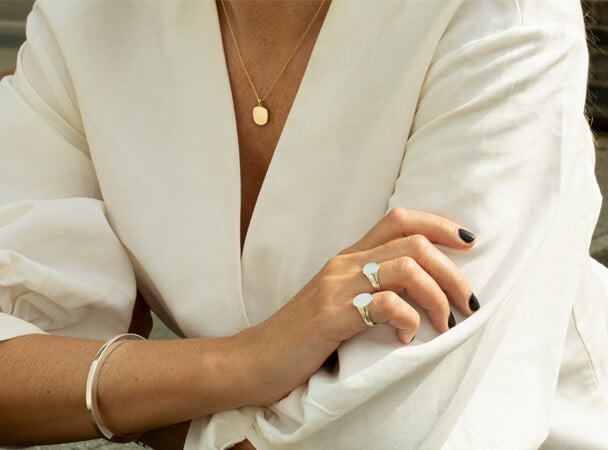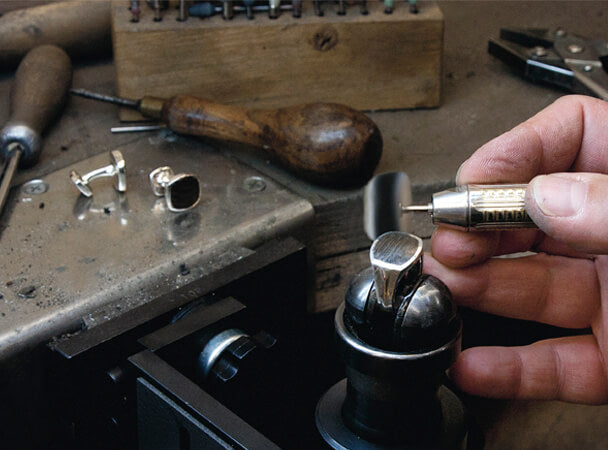What you need to know about opal jewellery
What is an opal?
An opal is not technically a gemstone, although its beauty belies its classification as a mineraloid. A form of silica, it has been used as a precious stone by jewellers for centuries. Prized by the Romans, ancient Greeks and many Arabic cultures, its modern use can be attributed to – as is the tradition in the history of jewellery – being favoured by the monarchy. After opals were discovered in Australia (then a British colony) under Queen Victoria’s reign, she started wearing the stone, also gifting it to her daughters. And thus our modern fascination with this multicoloured, enigmatic gem was born.

Coober Pedy Australia
Where do opals come from?
In the centre of Australia, amidst vaste swathes of hot, barren, orange sand, is Coober Pedy. Stand on a mound of hot earth and look all around and all you will see is orange. The closest settlement is 8 hours drive either way. Yet this seeming wasteland hides a sparkling bounty. This is the largest known source of opals, bringing miners from all across the world to live in the town’s network of dug-out underground homes. A huge proportion of the world’s opals come from this small area, with over 90% of opals found in Australia. The remainder are found in other parts of the world such as Mexico, Brazil, Indonesia, Czech Republic, Ethiopia and the USA.
Opal stone meaning and opal colour
The name opal comes from the word ‘opalus’ meaning to see a change in colour. The name is apt as not only do opals come in a range of pale to rainbow hues but they shimmer under the light, appearing to favour one then another blue, green or pink. Some cultures thought them rained down from the sky as droplets of water, whilst others attributed luck to them. The Romans also imbued them with dreams of hope and purity.
How is an opal formed?
And now for the science bit. Opals, unlike other gemstones, are not compressed elements or crystals, but droplets of layered silica. Allow me to explain: opal is formed from a solution made of silica dioxide and water. It is found in places with rich sandstone which, as water runs through it, deposits the silica into it. This silica rich water then trickles through the earth, finding small fissures and holes, formed by cracks or decomposing fossils, and pools there. Over time the water evaporates, leaving behind the solid silica. Or opal. It’s no wonder opals are often associated with fortune given the conditions under which they are formed just seem so very unlikely…

Stephen Einhorn Oval Halo Ring 18 Carat Yellow Gold & Oval Cabochon Opal
How to care for opal jewellery
Opals are relatively soft so need to be loved and looked after with extra care. Used in a lot of antique jewellery, with proper handling there is no reason why your opal ring or necklace cannot last your own and your children’s lifetimes. As you should when wearing all fine jewellery, avoid doing sports or manual labour such as gardening or changing a car tyre… (see our jewellery care guide for more informtation). Water will not harm your opal so clean it in warm soapy water with a soft cloth, or with a jewellery cloth. Easy!
Types of opal
The opals you see in many pieces of jewellery are often not simply opals, but doublets or triplets. Not always marked as such it is a good idea to quiz your jeweller to make sure you know what you are getting. Because opals are so soft, and it takes a skilled craftsperson to work with a solid opal, many jewellers opt for a thin opal backed by a harder material such as plastic or black ironstone, either with two layers of opal and backing – a doublet – or three layers of clear quartz, opal, and backing – a triplet. Stephen Einhorn is fortunate in the fact that we have a brilliant team of skilled in-house jewellers and the best quality stones; the ones you see in our London jewellery shop and on our website are the real deal.

Stephen Einhorn Making Of Our Oval Opal Ring
Opal prices
As with all precious gemstones from diamonds to rubies and pearls, opals vary in size, quality, and therefore price. The customer always has a choice to purchase an opal within their means, and the opal’s beautiful variation makes the choice easier. Here at Stephen Einhorn we use the finest, pure opal stones, each one hand-selected. Have a look at our new Opal oval Halo ring and you will see the lustre is worth the price tag.
Whether opals symbolise hope or luck, resemble droplets of water or tiny pools of dappled light, their delicate beauty is without question. But don’t take our word for it. Come in and see for yourself.












